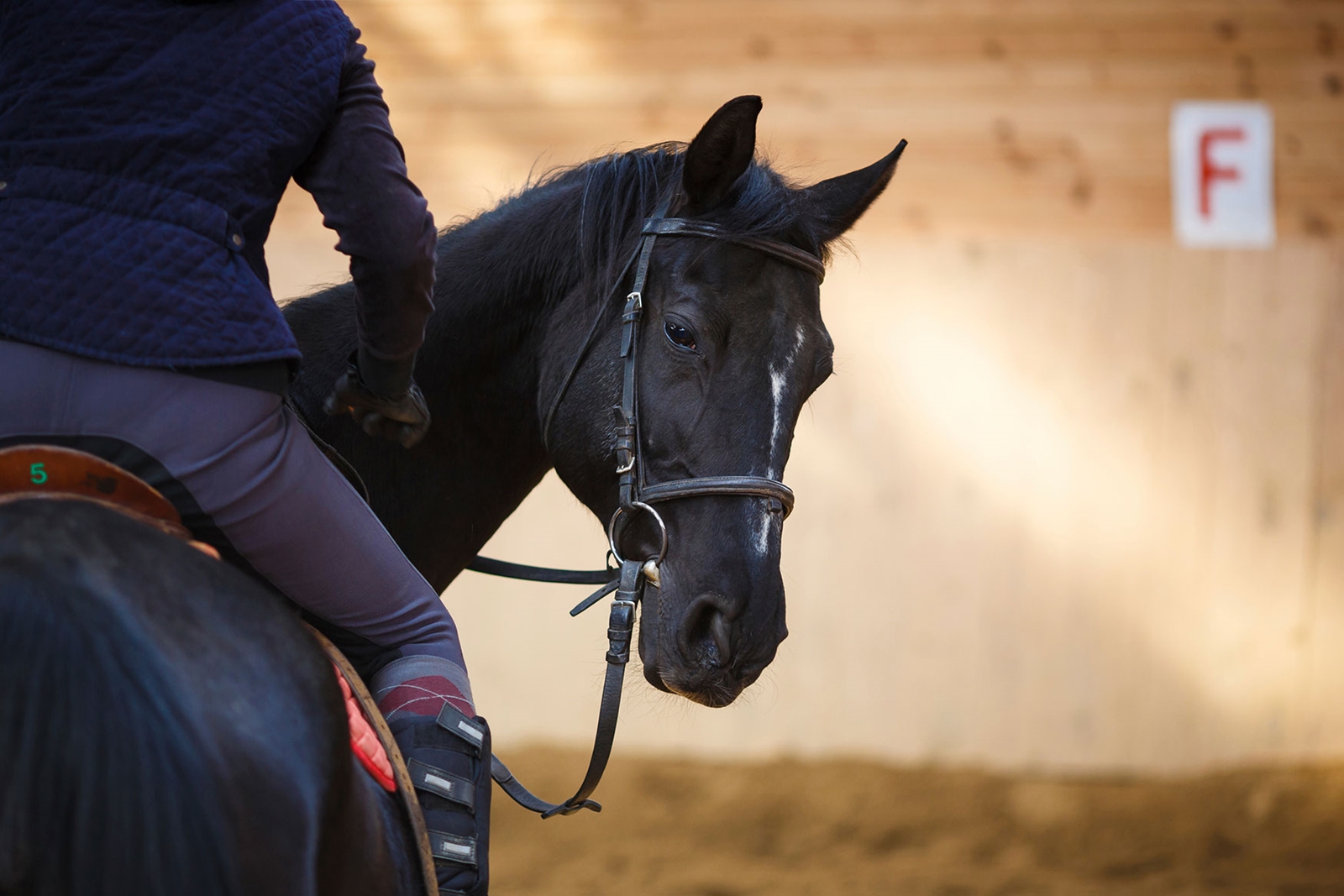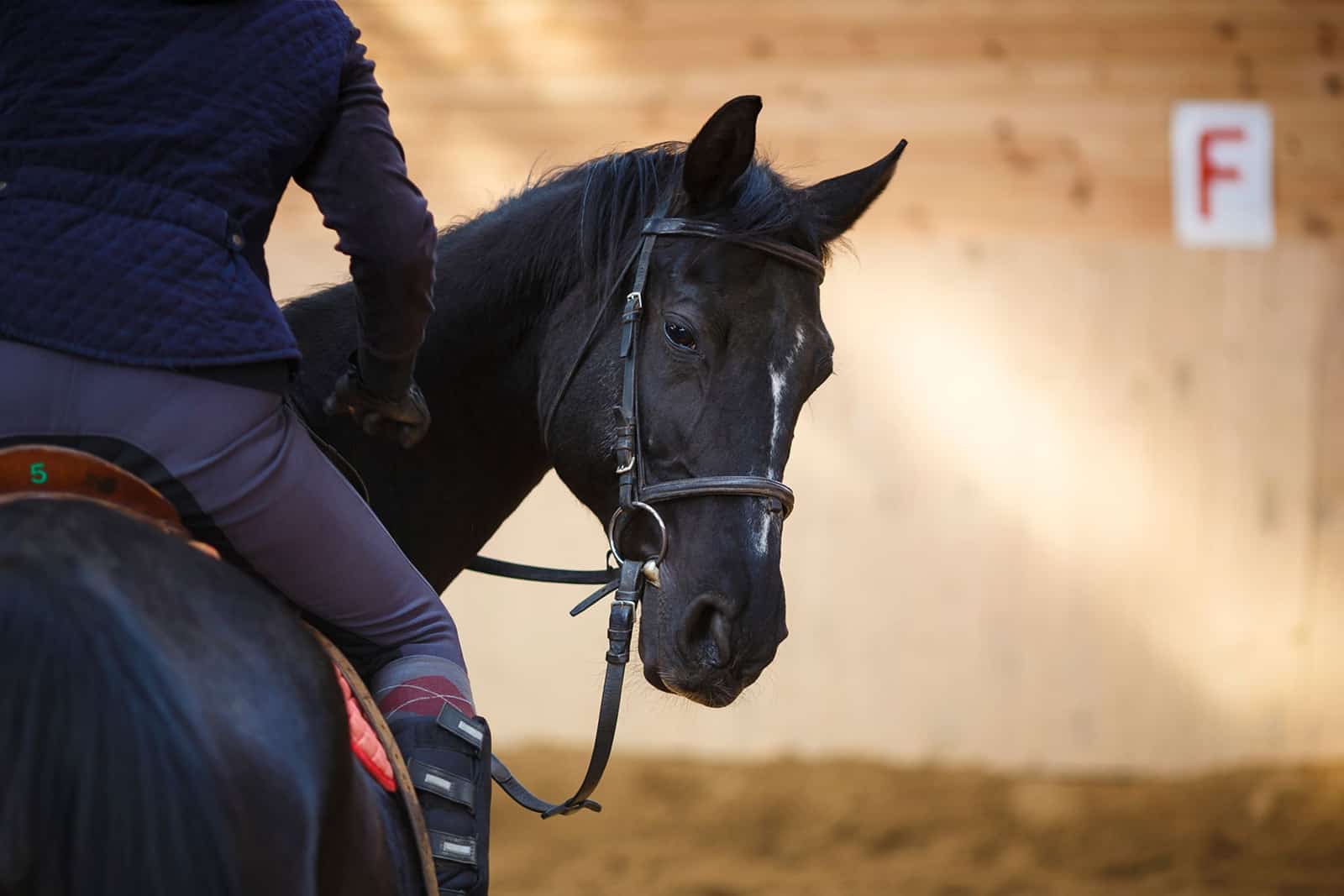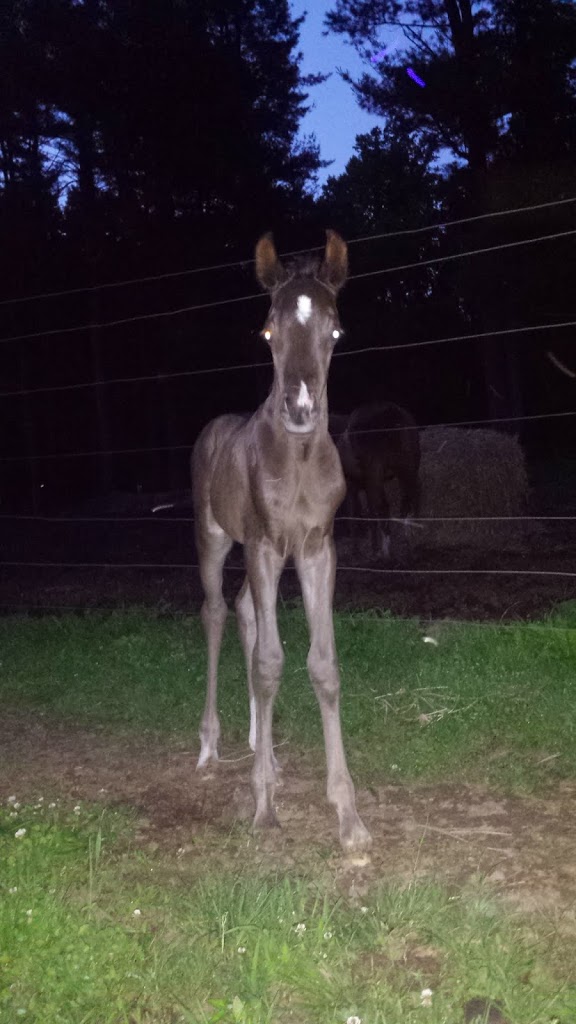
Treat-Training Horses While Riding – The Horse
There are some good solid tips in this article. East West depends more on conscious horsemanship principles instead of treat training. There is a time and a place for both.
– – – – – – – – – – – – – – – – – – –
Treat-Training Horses While Riding
Our equine behavior expert offers advice for applying learning theory and treat-training horses under saddle.

Q.My 4-year-old Warmblood-Anglo Arabian filly is incredibly smart. She’s one of those horses who picks up new behaviors right away, in one or two tries, if there’s food involved as a reward. This has made her super easy to train on the ground. She is more complicated (and opinionated) under-saddle, and I don’t feel like we have as many “aha!” moments when I’m riding her. She appreciates pats and verbal “good girls,” but doesn’t respond to them nearly as well as a carrot treat on the ground. How can I translate her quick learning through food motivation to our under-saddle work?
A.Training from the ground and saddle are different in several important ways from the perspective of both horse and human. Experiences and skills developed during groundwork do not always transfer automatically to riding. Being aware of some common sticking points and what to do about them can help bridge the groundwork and riding exercises gap, and improve your horse’s responsiveness and attitude under-saddle.
What is an effective reward for your horse?
The value of a reward can affect a horse’s interest in training. If your horse is like most, she’s probably more motivated by food than by praise, pats, or wither scratches1 and is more engaged in training that involves food. Many horse owners are familiar with groundwork exercises that use food rewards,2 but you can use treats while riding, as well. Clinician Alexandra Kurland has blazed the trail by developing techniques for using food rewards under-saddle.3 It takes a little practice to smoothly dispense the treats, and the horse usually has to stop to take the food, but the improvement in the horse’s interest and attitude toward training are well-worth these minor inconveniences.
Using food rewards from the saddle also builds a bridge between groundwork and riding. A disconnect can occur if positive reinforcement with food is used on the ground, and pressure-release (negative reinforcement) is used from the saddle. To clarify, negative reinforcement refers to the application of (light) rein tension and leg pressure; the rider rewards horse’s correct response—turning, going, or stopping—with the release of pressure.
A horse can become confused, frustrated, or unresponsive if principles of learning theory are not followed.4 One common riding mistake is giving multiple cues at the same time, for example by applying simultaneous rein tension and leg pressure. Horses brains process one cue at a time, so presenting cues in sequence can improve communication and performance. Another common fault is to apply more pressure than necessary, which forces the horse’s response. A principal goal of ethical equitation is to apply the least amount of rein tension and leg pressure possible, so the horse freely volunteers the response.
Is the training in-hand easier and more frequently rewarded than the training under-saddle?
The more similar your horse’s groundwork and riding experiences are, the more easily the training will generalize across contexts. Differences in equipment, routine, location, and performance demands create barriers to the transfer of knowledge from one training context to the other. You can make the groundwork and riding experiences more comparable by regularly tacking up for groundwork, leading your horse through riding patterns, practicing groundwork exercises while mounted, and working in the same locations.
Riding exercises are often more complex and stressful than groundwork. High performance demands combined with low reward rates can lead to a phenomenon called “ratio strain.” If given a choice, nearly all animals will stop working when the demand is high and the payoff low. The behaviors you described in your horse under-saddle—asserting herself and showing fewer “aha!” moments—could be caused by ratio strain, which can be prevented by rewarding smaller successes and increasing the frequency of rewards.
How can acoustic cues help bridge groundwork and riding?
Groundwork and riding often incorporate distinct sets of cues that engage different sensory systems. On the ground, we rely on sight to observe the horse and communicate with the horse through visual signals, such as body position, hand gestures, and movement. From the saddle, we rely more on feel and communicate through touch. In contrast, sound cues are equally effective from the ground and saddle but seldom incorporated formally into training.
Sounds play multiple roles in training and can function as both a marker and a command. Clickers and words of praise—“yes!”—are commonly used to increase precision in training by marking a desired response the moment it happens, which is then rewarded with a treat.2,3 When a sound is reliably associated with food, it acquires value and can become a powerful training tool.5 Riders can also use words as commands to cue or prompt a response before it happens. Familiar examples include “whoa,” “back,” and “trot,” but you can put nearly any behavior to a verbal cue. When sounds are used as commands, the horse’s correct response should be rewarded, either with food or by the release of rein tension/leg pressure.
Take-Home Message
Some simple changes in your current routine can create a stronger connection between groundwork and riding. The more similar the experiences are, the more easily groundwork will generalize to riding. You can accomplish this by using the same equipment, training in the same locations, practicing the same exercises and patterns, and using a common set of sound-based cues. Incorporating food rewards into training under-saddle, and being mindful to apply rein and leg aides correctly,4 will also help improve your horse’s interest in and attitude when ridden.
References
1 Sankey C, Henry S, Górecka-Bruzda A, Richard-Yris M-A, Hausberger M (2010) The Way to a man’s heart is through his stomach: What about horses? PLoS ONE 5(11): e15446. doi:10.1371/journal.pone.0015446
2 Kurland, A (2003) The Click that Teaches: A Step-by-Step Guide in Pictures. The Clicker Center
3 Kurlund, A (2011) The Click that Teaches: Riding with the Clicker. The Clicker Center
4 McLean, A, McGreevy, P, Principles of Learning Theory in Equitation: Revisiting the ISES Principles, http://www.equitationscience.com/learning-theory-in-equitation
5 Feng, L, Howell, T, Bennett, P (2016) How clicker training works: Comparing reinforcing, marking, and bridging hypotheses. Applied Animal Behaviour Science (in press)
https://thehorse.com/18144/treat-training-horses-while-riding/
On – 07 Jun, 2018 By Robin Foster
You May Also Like

Amputee veteran gets back on the saddle with help from local non-profit
September 28, 2018
May 15 vlog
May 15, 2022
